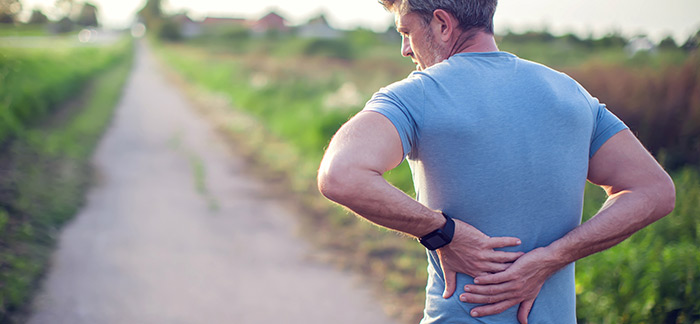
Why does my lower back hurt?
I get to see around 10 patients every single day who come to me with lower back problems either at the Sittingbourne Physiotherapy practice or the GP surgeries. The first question that they always ask me is why and where does the pain in the lower back come from?
Pain in the lower back is fairly common and can be quite painful and limiting. It can have many causes, ranging from a muscle strain to a more serious condition that requires immediate medical attention.
The lower back takes the weight of the entire spine and is responsible for everyday movements such as bending and twisting. Muscles and the other soft tissues surrounding the spine are responsible for the supporting the spine and help in the movement of the spine and the legs.
The majority of instances where a person experiences sudden and severe lower back discomfort are either caused by injuries to the muscles, ligaments, joints, or discs. This is because the body responds to injury by launching an inflammatory process, which can cause intense pain. However, because many of the nerve pathways overlap across different parts of the spine, the brain may have difficulty working out exactly which structure is responsible for the discomfort.
I understand that lower back pain can vary in severity and symptoms. It can range from mild discomfort to severe pain that affects daily activities. The symptoms experienced may depend on the underlying cause of the pain. Here are some examples of symptoms commonly associated with lower back pain:
- 1. Dull or achy pain: This type of pain is typically localized to the lower back region. It may feel like a constant ache or pressure.
- 2. Radiating pain: Some individuals may experience stinging or burning pain that travels from the lower back to the backs of the thighs. This pain can sometimes extend into the lower legs or feet and is often associated with the trapping of the nerve, which can also cause numbness or tingling sensations.
- 3. Muscle spasms and tightness: Lower back pain can be accompanied by muscle spasms and tightness in the muscles of the lower back, pelvis, and hips. These spasms can cause additional discomfort and restrict movement.
- 4. Pain with prolonged sitting or standing: Many people with lower back pain find that their symptoms worsen after sitting or standing for extended periods. The static posture can strain the muscles and structures of the lower back, leading to increased pain.
- 5. Difficulty with movement: Lower back pain can make it challenging to stand up straight, walk, or transition between standing and sitting positions. Individuals may experience stiffness or a limited range of motion in the lower back, which can affect their mobility.
It's important to note that these symptoms can vary among individuals, and additional symptoms may be present depending on the specific cause of the lower back pain. If you are experiencing persistent or severe lower back pain, it is advisable to consult a healthcare professional for an accurate diagnosis and appropriate treatment.
Follow my next blog for tips that can help with your back problems!

 01622 94 20 33
01622 94 20 33 admin@xcelhealth.co.uk
admin@xcelhealth.co.uk

